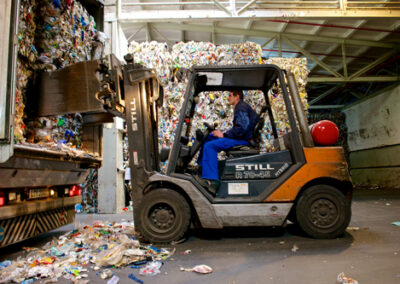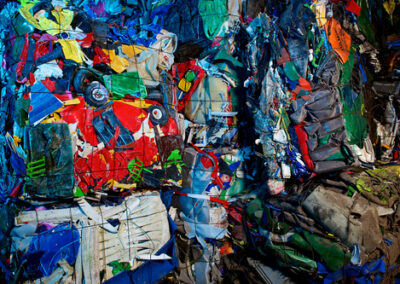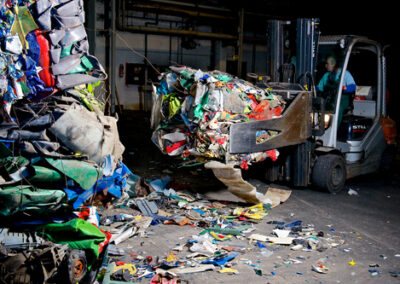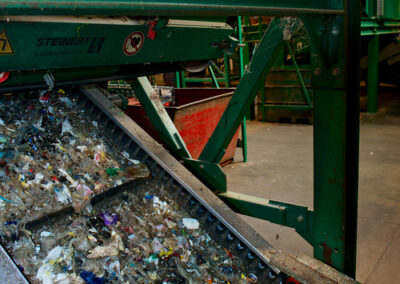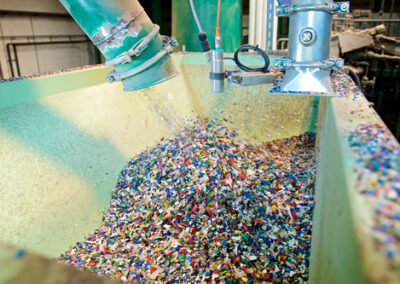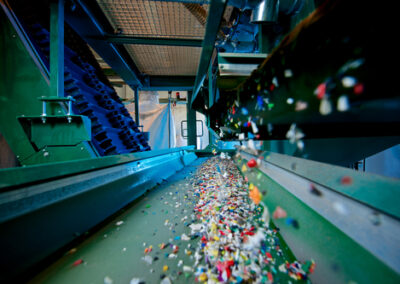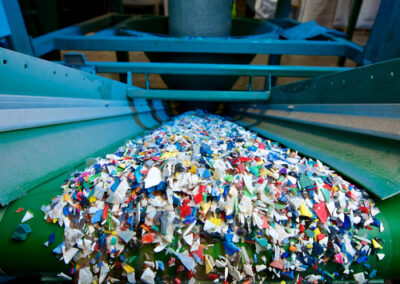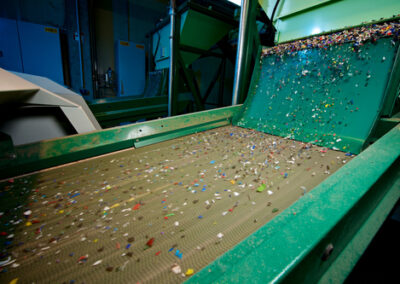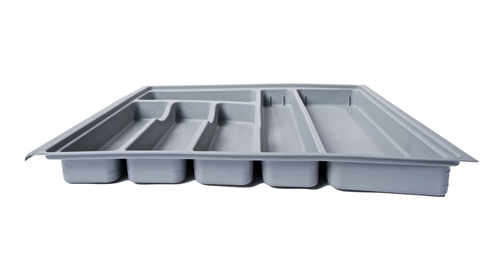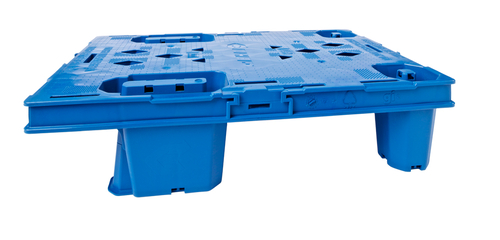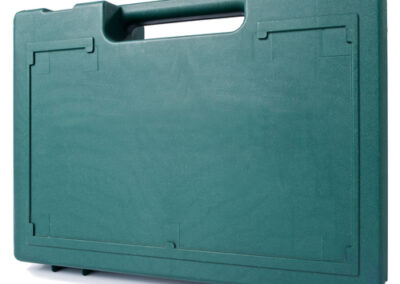Source material
Material for our “Upcycling
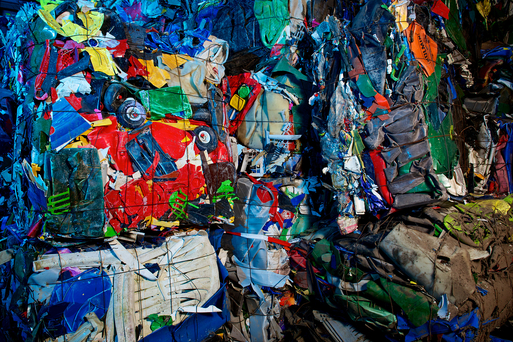
mtm processes polyethylene (PE) and polypropylene (PP) plastics from
- pre-sorted plastic blends
- commercial and industrial waste (s. Product specification MPO-GI)
- bulk waste collections
- household waste collections
all product specifications
Production
Recyling economy

1. Pre-sorted material arrives
Used plastics from household waste, commercial operations and municipal bulky waste collections are pre-sorted and brought as a mix of polyethylene and polypropylene to the recycling plant.
2. Shredding
The pre-sorted material is shredded and cleaned of impurities such as glass, metal, wood and sand.
3. Washing, separating and sorting
The shredded material is washed and thermally dried. Some of the washed material goes through an additional sorting step to separate it by plastic type and colour.
4. Extruding the material into recyclates
Now the material is fed into the extruders. The material is compressed, melted, filtered, degassed, homogenised and granulated. The recyclates go through a final quality inspection in the laboratory before it is ready for transporting to customers.
5. End products made of recycled polyolefins
Plastic processing plants use these recyclates in the production of horticulture, building and construction, packaging, various household items and much more.
Application
Meeting your application needs
We offer a variety of regranulate suitable for your application needs.
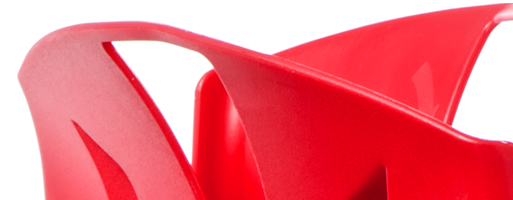
Applications for our branded products
Regranulate from mtm plastics is used in many high-quality end-products.
Application examples consisting of Dipolen™:
- Home & garden furniture and accessories
- Gutters
- Buckets
- Building and construction aids and items
- Protective packaging items such as edge protectors and protective sleeves
- Profiles
- Window wedges
- Formwork supports
- Composters
- Pipes and roles for different purposes
- Boxes
- Pipe connection sleeves
- Fledgling boxes
- Lawn grids
Application examples consisting of Purpolen™:
- Pallets
- Concrete spacers
- Boxes
- Rubbish bins
- Pens
- Painting materials
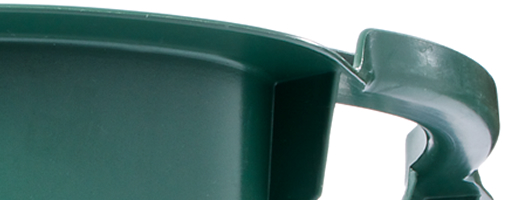
Design for Recyclability
10 Codes of Conduct for Design for Recyclability (DfR)
Polyolefins (PE and PP) are an ideal material for designing flexible and rigid packaging that can be recycled and these Design for Recyclability (DfR) Codes should be adopted to optimise their recyclability.
DfR incorporates recycling codes of conduct into the design process keeping in mind the end-of-life aspects after its original intended use. These DfR Codes are an essential tool for delivering to market plastic packaging, with the right functionalities, yet also, helps conserve natural resources and minimise waste (including product waste) disposal or incineration and littering. DfR can maximise recycling rates for all kinds of plastic packaging because it makes separation and reprocessing more efficient. It also ensures the steady and affordable supply of high-quality recyclates, from so called “recycling-ready” packaging. Those recyclates also have a significantly lower CO2 footprint and require less fossil fuel in the manufacturing process versus production of virgin resin.
While there are many aspects of plastic packaging design that make packaging “recycling-ready”, we have identified three key overarching codes of conduct when designing for the function (such as preservation, safety and wastage) of the packaging:
- Use as few different polymer types, components and materials as possible in the design of the overall packaging. This applies to all packaging components such as the body, closures (caps, liners seals), lidding and any other additional components.
- Make it easy to strip and/or wash off all decoration (such as labels, sleeves, adhesives, printing and inks) from the main functional part of the packaging
- By no means, should packaging designed according to the DfR Codes impact the preservation/protection the food or product, however do ensure that the requirement is really necessary and not over-engineering.
The following “do’s and don’ts” help our partners and customers navigate the relatively new and complex field of DfR in Polyolefins. These codes are based on current circumstances and technologies used in European countries and we recommend that you regularly consult trade and industry bodies such as Plastics Recyclers Europe and the Institute Cyclos-HTP in order to stay up to date on emerging technologies, waste stream evolutions, application-specific DfR guidelines, recyclability assessments and new sorting and reprocessing capabilities.
Download: 10 Codes of Conduct (PDF)
Read more: https://www.borealiseverminds.com/
